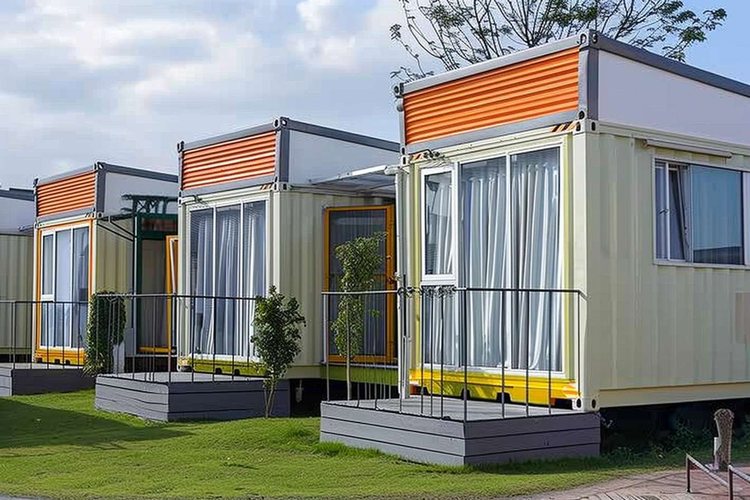The Rise of Prefabricated Homes: Building the Future, Today
Prefabricated homes are revolutionizing the construction industry, offering a modern approach to homeownership that combines efficiency, sustainability, and customization. These innovative dwellings, built off-site in controlled factory environments, are reshaping the way we think about housing and challenging traditional building methods. As the demand for affordable, quick-to-build housing solutions grows, prefabricated homes are emerging as a compelling alternative for homebuyers and developers alike.

How does the construction process of prefab homes work?
The construction of prefabricated homes begins with designing the house using advanced computer-aided design (CAD) software. Once the design is finalized, the individual components are manufactured in a factory setting. These components can range from small panels to entire room-sized modules. Quality control checks are performed throughout the manufacturing process to ensure each piece meets strict standards.
After the components are completed, they are transported to the construction site. The foundation is prepared in advance, and once the prefabricated sections arrive, they are assembled using cranes and other specialized equipment. This process is significantly faster than traditional on-site construction, often reducing build time by 50% or more.
What are the advantages of choosing a prefabricated home?
Prefabricated homes offer numerous benefits over traditional construction methods. One of the most significant advantages is the reduced construction time. Because much of the work is done in a factory setting, weather delays are minimized, and the on-site assembly process is streamlined. This efficiency not only saves time but can also result in cost savings for the homeowner.
Another key benefit is the consistency and quality control achieved through factory production. The controlled environment allows for precise measurements and assembly, resulting in fewer errors and higher overall quality. Additionally, prefab homes often incorporate sustainable materials and energy-efficient designs, making them an eco-friendly housing option.
Customization is also a notable advantage of prefabricated homes. Contrary to the misconception that prefab homes are limited in design, many manufacturers offer a wide range of customization options, allowing homeowners to tailor their houses to their specific needs and preferences.
Are prefabricated homes environmentally friendly?
Prefabricated homes are often considered more environmentally friendly than traditional construction methods. The factory-based production process typically results in less waste, as materials can be more precisely measured and cut. Any excess materials can often be recycled or reused in other projects within the same facility.
Many prefab home manufacturers also prioritize the use of sustainable and energy-efficient materials. This can include high-quality insulation, energy-efficient windows, and solar panel integration. The controlled manufacturing environment also allows for more precise construction, which can lead to better energy performance once the home is assembled.
Furthermore, the reduced on-site construction time means less disruption to the local environment. This can be particularly beneficial in sensitive ecological areas or densely populated urban settings.
How do the costs of prefabricated homes compare to traditional construction?
The cost of prefabricated homes can vary widely depending on factors such as size, customization, and location. However, in many cases, prefab homes can be more cost-effective than traditional construction methods. The streamlined manufacturing process and reduced on-site labor can lead to significant savings.
| Home Type | Average Cost Per Square Foot | Estimated Time to Completion |
|---|---|---|
| Prefabricated | $100 - $200 | 3-4 months |
| Traditional | $150 - $250 | 6-12 months |
Prices, rates, or cost estimates mentioned in this article are based on the latest available information but may change over time. Independent research is advised before making financial decisions.
It’s important to note that while the initial costs of prefab homes can be lower, factors such as transportation and on-site assembly must be considered. Additionally, some high-end prefab homes with extensive customization can be comparable in price to traditional custom-built homes.
What does the future hold for prefabricated housing?
The future of prefabricated housing looks promising, with continued advancements in technology and design driving innovation in the industry. 3D printing technology is being explored as a potential game-changer in prefab construction, offering even greater precision and customization possibilities.
As urban populations continue to grow and housing shortages persist in many areas, prefabricated homes are likely to play an increasingly important role in addressing housing needs. Their ability to be quickly deployed makes them an attractive option for disaster relief housing and rapid urban development projects.
Moreover, as sustainability becomes an ever more critical consideration in construction, the eco-friendly aspects of prefab homes are likely to drive further adoption. Innovations in materials science and energy-efficient technologies will continue to enhance the environmental performance of these homes.
In conclusion, prefabricated homes represent a significant shift in the housing industry, offering a blend of efficiency, quality, and sustainability. As technology advances and consumer preferences evolve, these innovative dwellings are poised to become an increasingly popular choice for homeowners and developers alike, shaping the future of residential construction.






